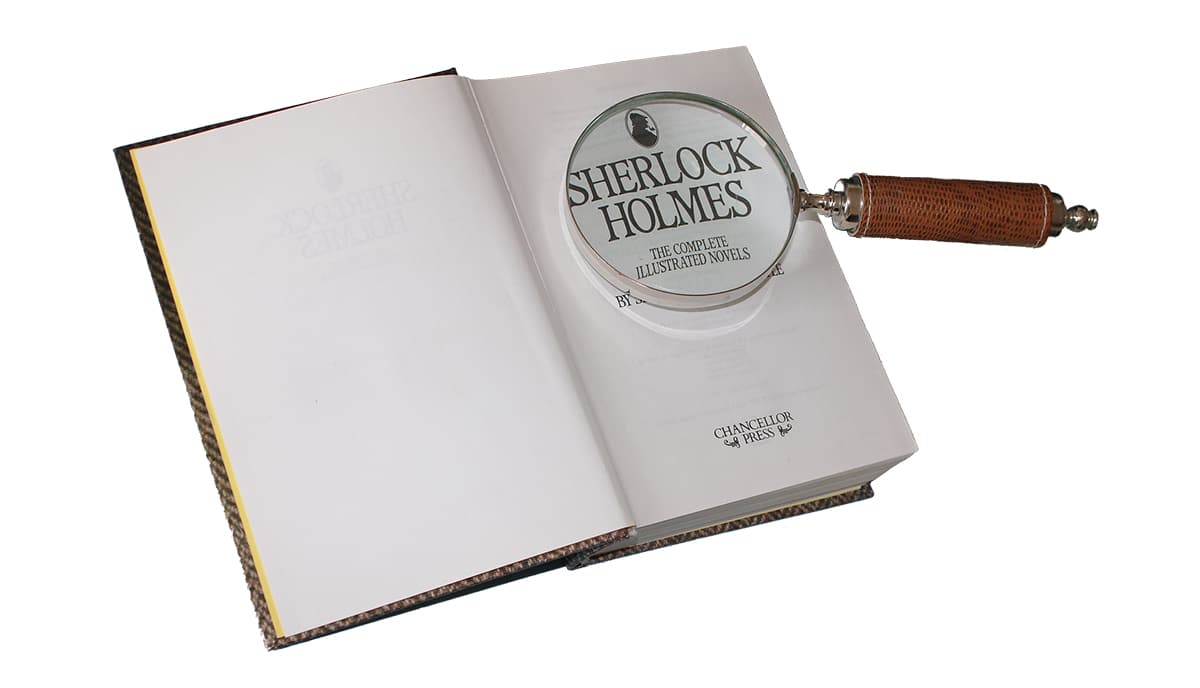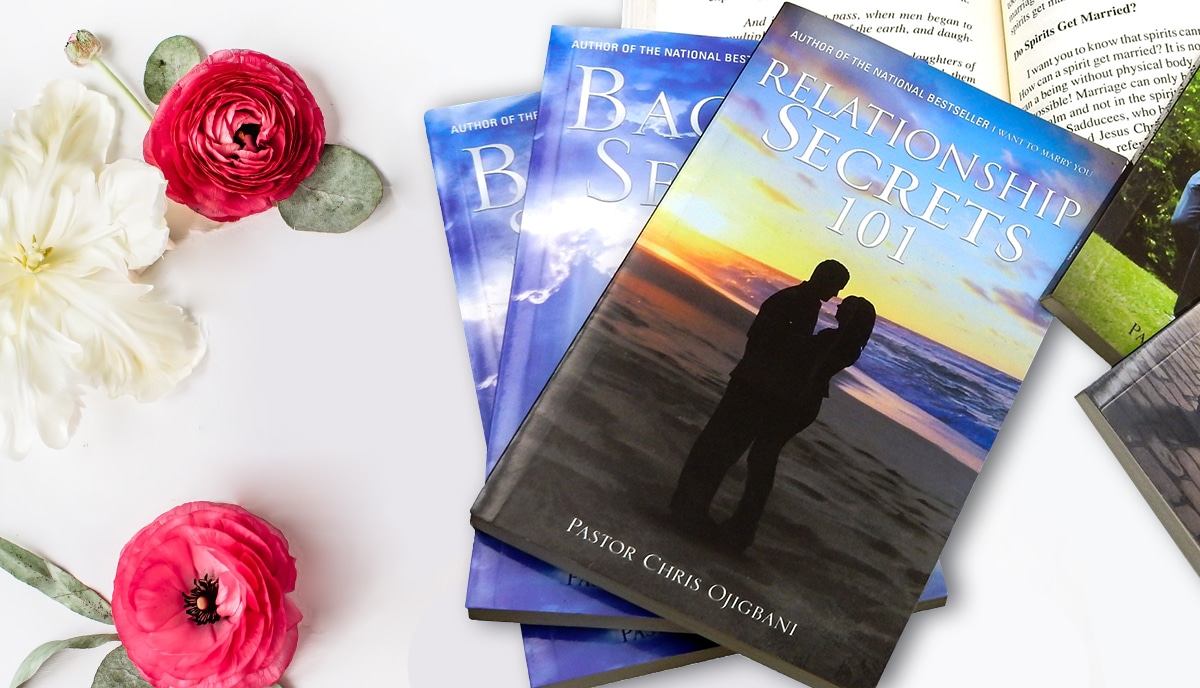We work with several successful self-publishers across a range of genres to print beautiful editions of their books. In this post, we'll examine what you need to write a gripping mystery novel that keeps the reader turning the pages right to the end

Introduction
The mystery novel is among the world's bestselling and popular genres. The hallmarks of a good mystery story are a sympathetic protagonist, a mind-taxing puzzle to solve, nail-biting tension, and a thrilling finale. Done well, it's a genre that keeps readers on the edge of their seats, eagerly turning pages to uncover the truth behind a crime. Crafting a successful mystery novel requires careful attention to various elements that make the story interesting and keep the reader emotionally and intellectually engaged, immersed in the fictional world you've created, and desperate to find out what happens next. In this post, we'll uncover the mysteries of mystery writing and explore the essential components of a successful mystery novel to give you helpful and actionable tips on how to write one.
What is the mystery genre?
Before delving into the intricacies of writing a mystery novel, it's crucial that you understand the defining points of the genre itself. Almost all mystery novels revolve around the central fact of solving a crime or unraveling a series of crimes. The most common crime is a murder. But the crime may also be a kidnapping, a theft, or drug smuggling, for example. Most also have a single, key protagonist—often a professional detective or amateur sleuth—with whom the reader can identify and through whose eyes and experience, the reader becomes an active participant, working alongside the protagonist to uncover clues and reveal the identity of the culprit.
The origins of the mystery genre can be traced back to the 19th century, with authors like Émile Gaboriau, the French writer who created Monsieur Lecoq and is often attributed with having invented the genre, and the iconic Sherlock Holmes invented by Arthur Conan Doyle and arguably the most famous fictional detective of all time. Then there's Dorothy L. Sayers Lord Peter Wimsey, Margery Allingham's Mr. Campion, G. K. Chesterton's Father Brown, Georges Simenon's Maigret, and Agatha Christie's Hercule Poirot and Miss Marple, to name only a few from the classic period of the mystery novel.
Contemporary mystery writers and include Michael Connelly, Nicci French, Lee Child, Tess Gerritsen, Harlan Coben, and even Richard Osman. Successful mystery stories often feature a detective or protagonist who employs deductive reasoning, logical analysis, or intuition to solve the case. Mystery novels can be set in various environments, from quaint villages to bustling cities, offering readers a glimpse into the dark side of human psychology and society.

The 10 essential elements of a good mystery novel
To create a successful mystery novel, you must incorporate several essential elements. These elements will engage readers and keep them invested in the story from beginning to end. So, let's explore these crucial components that will help you write a novel that readers cannot put down.
1. An opening hook
The opening of a mystery novel is vital in capturing the reader's attention and giving them reasons to keep reading. The story should start with events, dialogue, and characters which raise intriguing questions in the reader's mind. This is called “the hook”. In most mystery novels, it will be the discovery of the crime—often the body of the murdered victim, or the appearance of a central character who describes the core puzzle. But of the opening pages, the most important is the opening paragraph, and of that, the opening sentence. Here's a quick example of what we think is one of the great opening sentences from any mystery novel.
It's from No Second Chance, by Harlan Coben, which starts with the sentence, “When the first bullet hit my chest, I thought of my daughter.”
Even though we still don't know who the narrator is, this sentence throws us straight into the action and raises several questions in the reader's mind: Who is speaking? Why have they been shot? Who pulled the trigger? Who is his daughter? How many shots were fired? We also feel immediate empathy for the narrator because his or her first thought is for their daughter. And the use of the first person narrative viewpoint shows us that the narrator has survived being shot (or how could they be writing this now!) which raises further questions: How did they survive? What happened next? Is their daughter safe? It really doesn't get much better than that. It would be a very indifferent reader who wasn't compelled to read on.
2. A protagonist we can root for
A good mystery novel requires a likable and relatable protagonist who serves as the detective figure. They don't need to be a professional detective or police officer, although they often are. But they may also be of the “amateur sleuth” variety. In modern mysteries, they are often reluctant to get involved at first, but forced by circumstances or an unexpected personal tragedy to unravel the mystery. This character should possess intelligence, wit, and the ability to solve complex puzzles. Readers should root for the protagonist and feel a connection to their journey, making them emotionally invested in the mystery's resolution.
3. A protagonist with depth and authenticity
But your protagonist should not be perfect. It's essential that they have a flawed personality and that, in other circumstances, they might themselves have succumbed to the darker side of their nature. Without this deeper aspect of their character, it's hard to create a detective who seems authentic and believable. Having a flawed protagonist also helps to introduce themes of conflict and transformation, which are essential to any good story, whatever the genre.
The best “detectives” in mystery stories struggle with the tension between their good intentions and their personal demons. Think of Sherlock Holmes's misogyny and addiction to cocaine, Hercule Poirot's narcissistic vanity, Adam Dalgleish's depression, or Philip Marlowe's alcoholism and tendency toward violence, just as a few examples. But—unless you want to create an antihero protagonist—make sure that your detective figure struggles with and overcomes these character flaws and doesn't just give in to them. They needn't be people that we'd like in real life, but in your novel, we, the readers, need to feel empathy for them; we need to believe that they have depth and authenticity.
4. Sidekicks and supporting cast
Besides the protagonist, a mystery novel should feature a cast of well-developed supporting characters. These will be the suspects—which should be almost everyone but the detective!—and, not least, a “sidekick”. The sidekick is a character close to the protagonist who serves as a bridge between the readers' average intelligence and the genius of the detective hero, as well as providing a balancing and protective role to the protagonist's deeper flaws. Think of Sherlock Holmes's Dr. Watson, Inspector Morse's Sergeant Lewis, or Lord Peter's Bunter. Each character should have their own unique personality and motivations, contributing to the overall depth and authenticity of the story. Supporting characters can serve as allies or suspects, adding intrigue and complexity to the narrative.
5. The murderer/criminal and the antagonist
While the murderer or criminal and the antagonist are often the same character, they needn't be. For example, in many of the best Holmes stories, the murderer exists only to be caught; the real antagonist, the one who holds up the progress of the brilliant detective's investigations, is often Inspector Lestrade of Scotland Yard or some other character who disapproves of Holmes and his methods. In other stories, Professor Moriarty combines both roles.
However you handle it, your mystery story must have a criminal and antagonist who is as wicked as the protagonist is good and just as smart, if not smarter. What finally causes their downfall, other than the detective's intelligence and dogged determination to bring him to justice, is his own flawed personality—which often mirrors that of the protagonist. The crucial difference is that the protagonist struggles with and overcomes his flaws in order to see the crime solved and justice done, whereas the antagonist succumbs to his faults and finally reveals his true nature.
6. A plot of twists and turns
The plot of a mystery novel should grip and fill with suspense. It should keep readers on their toes, eagerly turning pages to uncover the truth. Whether told in the first or third person, the storytelling should maintain a balance between providing enough information to engage readers and leaving room for speculation and anticipation. We divide most writers into those known as “plotters” and those called “pantsers”. Plotters develop detailed, structured outlines of every act, scene, and plot twist before they write. Pantsers (who, “write by the seat of their pants”) tend to just start and see where their story takes them. For writing a good mystery novel, our advice would be to plan everything carefully first.
Because a mystery or crime story isn't just a normal plot—it's a logical puzzle in which you need to place clues and “red herrings” with great care—you have a much higher chance of success if you plan it in advance. That doesn't mean you can't still be creative in your writing, characterization, and emotional color; of course, you can. But with a mystery, it's vital that you give away enough detail to keep the reader convinced they can figure out the solution before the detective, but not so much that they actually can! And that, you'll find, takes careful planning. But remember that all your plot twists and surprises must be logical, entirely believable within the framework of the story. If you throw in a surprise at the end that no-one could have figured out (such as a new character never mentioned before, or a vital item or piece of information which was never referred to or hinted at until that moment) your readers will feel cheated rather than surprised.
7. Believable dialogue
Effective, believable dialogue is crucial in immersing readers in the mystery novel's world, revealing character, and dropping both real clues and misleading red herrings. Well-written conversations between characters can reveal important information, provide insights into their personalities, and propel the plot forward. Dialogue should be natural-sounding, authentic, and serve a purpose in advancing the story.
In real life conversations, we stop and start, “um” and “ah” and express ourselves fairly incoherently! In written dialogue, natural-sounding doesn't mean to imitate natural speech properly – it would be unreadable! – so much as to create a rhythm and cadence in the dialogue that suggests a natural flow of conversation while actually being structured with care. Written dialogue should always be neat and succinct without sacrificing the recognizable “voice” of each character. Each speaker should be recognizable immediately by their dialogue with no constant explaining, “said Thomas”, “Alice sighed,” etc.
8. The slow burn
A successful mystery novel won't only be an intellectual puzzle. It should have a strong emotional engagement as well. This means building in plenty of conflict (which may be understated; psychological conflict rather than outright fisticuffs) and a slow-burn escalation in tension. A classic method is to introduce further crimes or murders at crucial moments in the plot's development. So, just when we—and the detective—think that we're closing in on the murderer, the suspect we think did it is also murdered. Or, a near miss attempt is made on the life either of the detective or their sidekick, for example. Throw in plenty of potentially suspicious behavior by all the characters as you build the tension. Closed room dramas which have a threatening, claustrophobic atmosphere with an invisible threat are another great way to make sure there's plenty of conflict and tension to keep the readers turning the pages.
9. A surprising but satisfying ending
As you'll have figured out by now, your mystery novel's plot has two levels: solving the crime and following the development of the protagonist. You could call these two levels the external plot and the internal plot. Whether the detective resolves their inner struggles by the end depends on what you have in mind in the future. If you want to write a standalone novel, then you'll probably resolve everything on the last page. If you aim to produce a series of mystery novels revolving around the same protagonist, then you'll want to resolve the external plot (solve the crime) but leave the detective's inner struggles still alive and kicking.
In terms of the outer plot, the final resolution should be both surprising (i.e., the reader didn't see it coming) but also satisfying (so that all the clues add up and the reader is left feeling that they could have solved the problem themselves). Never resolve a mystery plot by introducing a new character, object, or event that the reader didn't know of before. That's called a “deus ex machina” intervention and will only annoy your readers. The ending must be internally logical, and complete.
10. Authentic details
To create a believable mystery novel, it is essential to pay attention to details and conduct thorough research. Whether it involves understanding police procedures, using accurate technical terminology, or portraying a specific time period authentically, incorporating accurate information enhances the credibility of the story. Readers appreciate the effort put into crafting a realistic and immersive experience. So don't just guess—do your due diligence and find out what people wore back in the 20s, or how the police go about things, or whether the cause of death is realistic and credible. Accuracy creates authenticity which leads to credibility and helps readers believe the story as it unfolds.

The 12 subgenres of mystery novels
The mystery and crime genre encompasses various subgenres, each with its own unique characteristics and storytelling conventions. It's not all violent crime and explorations of the dark criminal underworld. If you want to write about a retired librarian who must solve the case of the missing sponge cake and it turns out the criminal is the dog who ate it, there's a market for that, too! So now, let's explore some of the most popular subgenres within the mystery genre.
1. Cozy mysteries
Cozy mysteries typically involve bloodless crimes, often centered on a victim who is not well-liked. These mysteries focus more on the puzzle-solving aspect rather than evoking intense emotions or excitement. If you enjoy a captivating puzzle with no high emotional stakes, cozy mysteries are an excellent choice. Our sponge cake eating dog mystery would fit in here.
2. Caper mysteries
Caper mysteries bring a touch of comedy to the genre. These stories often feature bumbling investigators or witnesses who have lost their grasp on reality. Despite a dead body, the humorous elements provide a light-hearted and entertaining reading experience, allowing readers to relax and enjoy the story. Pure escapism and fun.
3. Hardboiled mysteries
We know hardboiled mysteries for their gritty and intense nature. These novels feature a professional detective who battles personal demons while solving complex cases. Violence and graphic details are common in this subgenre, making it a choice for readers who enjoy a darker and more hard-hitting reading experience.
4. Softboiled mysteries
Similar to hardboiled mysteries, softboiled mysteries also feature a detective figure. However, these novels have a slightly lighter tone and place less emphasis on graphic violence or explicit details. Softboiled mysteries balance grit and a more relaxed atmosphere, appealing to readers who prefer a milder, less emotionally challenging reading experience.
5. Domestic mysteries
In domestic mysteries, animals often play a role in helping the owner solve crimes. We may set these novels in book clubs, bakeries, or other cozy establishments, adding a charming and relatable element to the narrative. Animal companions help uncover clues and provide an endearing aspect to the story.
6. Police procedurals
Police procedural focus on the intricacies of police investigations. These novels highlight the teamwork, department politics, and clashes of personalities within law enforcement. Police procedural stories often span across multiple books, allowing readers to become invested in the lives of the detectives and their pursuit of justice. They also require a lot of detailed and painstaking research.
7. Paranormal mysteries
Paranormal mysteries introduce supernatural elements into the genre. Ghostly apparitions, unexplained messages, and otherworldly occurrences create an added layer of suspense and intrigue. These mysteries offer unique twists and turns, captivating readers with their blend of the supernatural and the mysterious. The supernatural elements in the story may be real, fake, or remain ambiguous.
8. Noir mysteries
Their atmospheric and moody tone characterizes noir mysteries. The main character is often a professional detective or private investigator with deep-rooted character flaws. The setting is bleak and unforgiving, reflecting the dark and gritty nature of the story. Noir mysteries appeal to readers who enjoy a brooding and evocative reading experience. Even today, writers usually set noir mysteries in the 30s or 40s, which was the subgenre's height of popularity. So there can be an element of nostalgia, too.
9. Suspense mysteries
Suspense mysteries keep readers on the edge of their seats with high levels of tension. These stories move at a slower pace, gradually revealing clues and raising questions in the reader's mind. The bad guys often pursue the protagonist, adding an extra layer of danger and uncertainty. Suspense mysteries are not solely focused on solving the crime, but also on the survival and endurance of the hero and are carefully plotted to generate psychological and emotional tension.
10. Romantic suspense mysteries
Romantic suspense combines elements of suspense with a romantic storyline. Half suspense, half romance, these novels offer a double payoff for readers who enjoy both genres. The hero's triumph over the mystery is intertwined with a blossoming romance, resulting in a satisfying and emotionally fulfilling reading experience. To qualify as romantic suspense, the balance between suspense and romance must be carefully maintained, and the characters should not be together at the beginning of the book.
11. Heist mysteries
In heist mysteries, readers root for the criminals rather than the detectives. These novels often revolve around elaborate heists or intricate schemes, immersing readers in the criminal's world. The intricate planning and execution of the crime becomes the central focus, providing readers with a unique perspective and an intriguing reading experience.
12. Amateur sleuth mysteries
Amateur sleuth mysteries feature laypersons attempting to solve a murder, usually linked to someone they have a personal connection with. These novels emphasize the personal stakes and the deep involvement of the protagonist. The crime remains unsolved, and it is up to the amateur sleuth to uncover the truth, adding an element of personal investment and determination. The amateur either collaborates with the official investigation or conducts their own parallel investigation, believing the authorities to be incompetent or misguided.
How to structure a mystery novel in five steps:
While mystery novels can deviate from reader expectations, the most commercially successful follow a similar structure that keeps readers engaged and provides a sense of progression. You must compose this structure of specific “narrative engines” or key turning points in the plot, which makes sure that the pace and rhythm of the story work well. They don't constitute a complete plot outline—you can use The Hero's Journey, Save the Cat, the Story Grid, or your own preferred plotting tool—but represent essential plot points that must occur within your overall framework.
1. The offense
The novel begins with introducing the crime that the plot revolves around. This could be a murder, theft, or any other criminal act that sets the story in motion. It's important to recognize that this event occurs as early in the novel as possible, certainly within the first chapter. How you introduce it will depend on your chosen subgenre, writing style, and narrative viewpoint. It might described in third person by the author, in first person by the narrator if they witness it or make the discovery, or be related by a character within the story. But with a good mystery, bring it on right up front as everything that happens in your novel revolves around this first, crucial event.
2. Investigation
The detective or protagonist embarks on a journey to solve the mystery. They may do this as part of their job, because of personal involvement with the victim or friends or relatives of the victim, or reluctantly because of other pressures. In several famous mysteries, the “detective” is accused of the murder and they must investigate to clear their own name. However they get involved, the main body of the story follows their investigations as they gather clues, interview suspects, and follow leads in their quest for the truth. You should fill this stage of the novel with suspense and anticipation as the story unfolds. You should also weave the inner plot—the story of the detective's personal struggles—into this narrative along with any subplots. Don't overdo sub-plotting in a mystery story; the focus should be tight. But one or two subplots (a romance between His Lordship and the maid, for example, or a revelation that one of the trusted members of a group has a secret criminal past) can be a useful tool for planting false clues or “red herrings”.
3. The twist
At a certain point in the story, a twist occurs that shifts the focus of the investigation. This twist could be the discovery of a new clue, an unexpected lead, or a flaw in a suspect's alibi. The twist surprises both the detective and the reader, propelling the story forward in a new direction. The placement of the twist should come between the halfway and three-quarter points and usually shortly after, it seems that the case is getting too difficult to solve. These plot points need to be planned and placed carefully in advance, so that's another reason we recommend drawing up a detailed outline before you write.
4. Breakthrough
The detective experiences a breakthrough moment where they uncover a crucial piece of evidence or make a significant realization. This breakthrough brings them closer to solving the mystery and adds momentum to the story. The difference between the breakthrough and the twist is that whereas the twist can happen by chance or because of the action or inaction of another character, the breakthrough is always an “Aha!” moment for the detective and a direct result of their reasoning, deductive logic, and special skills.
5. Climax and Resolution
The climax of the novel occurs when the detective unveils the last piece of the puzzle and confronts the culprit. Create a tense and exciting atmosphere as the detective reveals the truth and confronts the culprit in the climactic moment. The resolution ties up loose ends, answering questions and providing closure for the story. As we noted before, in a standalone novel, you can tie the detective's personal story in with the external crime story solution and resolve that, too. If you want an ongoing series based around your protagonist, then let them solve the crime but remain troubled at a personal level, even though they may have made progress in confronting their demons during the investigation.
Top mystery writing tips
Now that we have explored the essential elements and structures — the key “narrative engines” — of a mystery novel, let's wrap up with several practical tips to help you write a successful crime novel. Follow these mystery writing tips to keep your readers engaged, turning the pages, and wanting more:
1. Hook the reader from the start
We touched on this before, but it's so important it's worth mentioning again here. To grab the reader's attention from the very beginning, start your mystery novel with an interesting hook. This can take various forms, such as presenting the crime scene or introducing a captivating character in an urgent situation that raises questions in the reader's mind.
2. Use cliffhangers
The term “cliffhanger” comes from the classic plot device used in various forms by the early pulp fiction writers in which the hero would have been thrown off a cliff edge by the bad guy, only to grab an overhanging root and remain dangling above the jagged rocks or raging waves below. And then the chapter would end! It's a device designed to get the reader to hurry on to the next chapter to see what will happen next. These days. A cliffhanger is any chapter ending that cuts off in the middle of an exciting moment, causing the reader to start the new chapter in order to find out the resolution. Don't end every chapter this way or your readers will soon tire of it. But two or three well-placed cliffhangers can help build suspense and keep the reader reading.
3. Create atmosphere
Setting the right atmosphere is crucial in a mystery novel. Craft a dark and unsettling environment, such as an abandoned building, the seedy backstreets of Victorian London, or a remote cabin in the woods. Pay attention to descriptive language and vocabulary, emphasizing the unsettling aspects of the case and creating an immersive reading experience. Intriguing dialogue between characters adds depth to the atmosphere, drawing readers further into the story. But be careful not to overdo this aspect and fall into “purple prose”. The most powerful and evocative atmospheres come from the precise choice of a few exact words rather than cramming your text with every adjective you can find in the dictionary!
4. Go for a slow reveal
Control the flow of information throughout your mystery novel to maintain suspense and keep readers engaged. This is another reason to plan rather than just start writing. Decide when and how to reveal clues, balancing the pace of the story. Each revelation should contribute to the overall plot and entice readers to continue piecing together the puzzle. Give away too much too soon and you'll lose the mystery. Give away too little too slowly and your reader will feel bored and let down.
5. Pay close attention to the internal plot
Your protagonist and supporting characters should have a purpose in the investigation. Explore their personal connection to the case and why it matters to them. Strong characters will undergo personal growth throughout the story, further engaging readers in their journey.
6. Give your readers the feeling that they could solve the mystery
Make readers feel like active participants in the story by leaving a trail of evidence. Craft intriguing clues that allow readers to piece together the mystery alongside the detective. The clues should be thought-provoking and satisfying, encouraging readers to engage in their own theories and speculations.
7. Use misdirection (or "red herrings")
Red herrings are false leads that mislead both the characters and the readers. Incorporating red herrings adds depth and complexity to the story, keeping readers guessing and enhancing the element of surprise. Only make sure that the red herrings are seamlessly integrated into the narrative and align with the overall plot and are both logical and credible within the context of the story, or your readers won't feel surprised so much as frustrated when they're revealed.
Our best advice of all: read, read, read
There's no getting round it. If you want to write in a genre, you must really enjoy reading it. Not only that, but you must read as widely and as deeply in your chosen genre as possible. That way, you'll learn so much about how to write well in that form and style. And if you find that you don't really enjoy mystery stories as a reader, it is very hard to write them convincingly for others. So, read everything from the most sophisticated literary mysteries to the cheap airport paperbacks.
Read first for pleasure, and then re-read with a notebook and pen to hand; reading as a writer with a critical and analytical approach to figure out what the author did, how they introduce the mystery, how they develop the character of the protagonist, and the overall plot structure. See if you can spot the real clues and the red herrings and how they worked within the story. Once you've done a lot of reading and made a lot of notes, you'll be ready to start work on your own mystery novel.
Crafting a captivating mystery novel requires a careful balance of the essential elements we've examined above, engaging storytelling, a strong “voice”, and meticulous attention to detail. By following the tips and guidelines outlined in this post, you can embark on a thrilling writing journey that keeps readers on the edge of their seats. Remember to create an interesting opening, develop well-rounded characters, maintain a gripping plot, and provide a satisfying resolution. Explore the unique characteristics of different subgenres within the mystery genre and conduct thorough research to guarantee accuracy and authenticity. Armed with these tools, you can write a gripping mystery novel that will be a great read and more likely to sell.
Talk to us!
If you're planning on self-publishing, when you're ready to print your mystery novel, then we should talk. We know this business inside out and have a ton of experience helping independent authors realize their dreams with our tailored custom book printing service. Get in touch for an informal chat about what you have in mind and how we can help. And if you're ready to go to print, we'll happily give you a no-obligation quote for the job. We can't wait to hear from you!









